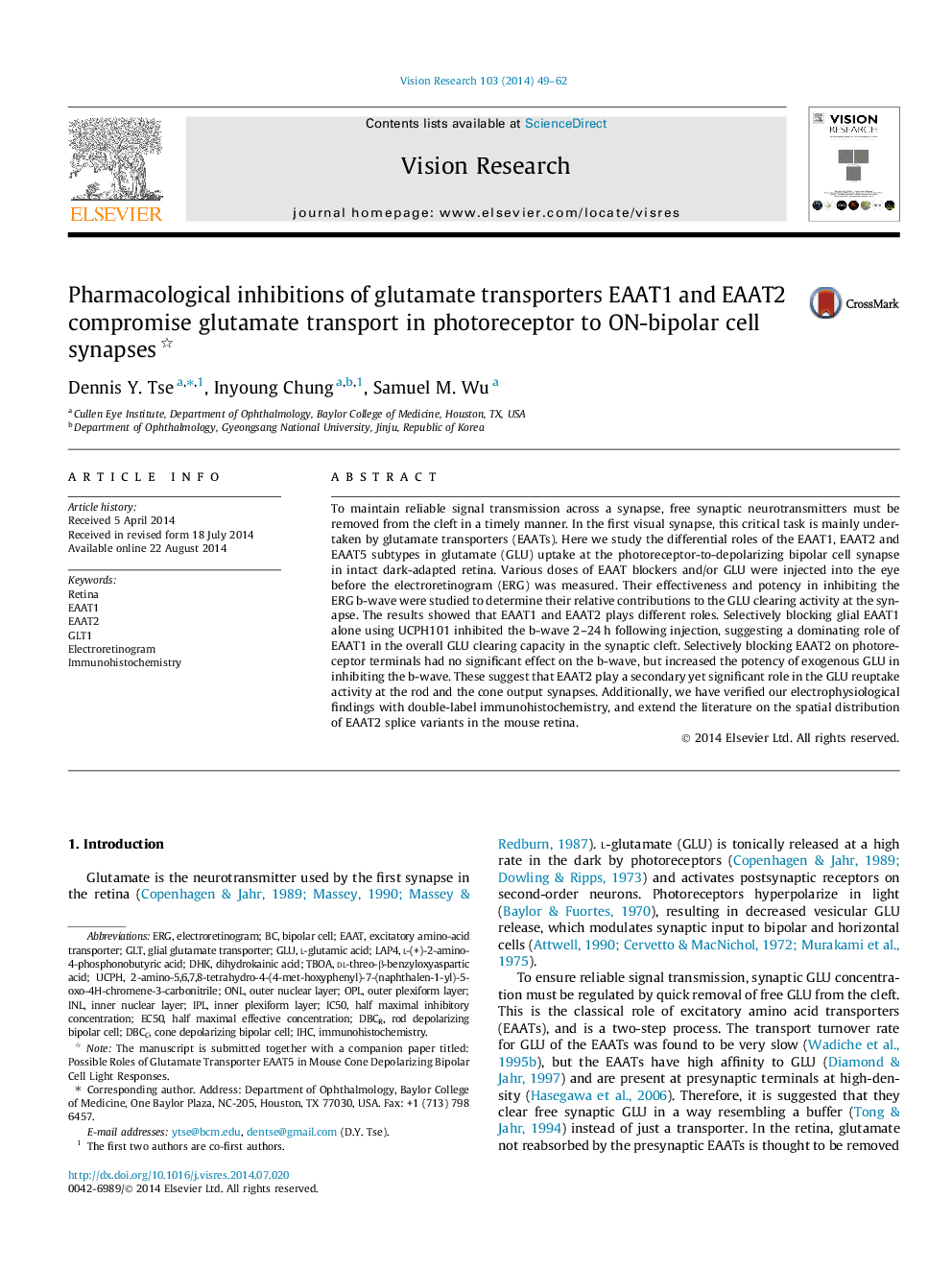| Article ID | Journal | Published Year | Pages | File Type |
|---|---|---|---|---|
| 6203396 | Vision Research | 2014 | 14 Pages |
â¢Intravitreally injected glutamate inhibited the mouse ERG b-wave with a low potency.â¢EAAT1 and EAAT2 contribute primarily to the clearance of synaptic glutamate.â¢Blocking EAAT1 inhibited the b-wave likely via accumulation of endogenous glutamate.â¢Blocking EAAT2 increased the potency of injected glutamate in inhibiting the b-wave.â¢The spatial distribution of EAAT2 splice variants was studied using immunohistochemistry.
To maintain reliable signal transmission across a synapse, free synaptic neurotransmitters must be removed from the cleft in a timely manner. In the first visual synapse, this critical task is mainly undertaken by glutamate transporters (EAATs). Here we study the differential roles of the EAAT1, EAAT2 and EAAT5 subtypes in glutamate (GLU) uptake at the photoreceptor-to-depolarizing bipolar cell synapse in intact dark-adapted retina. Various doses of EAAT blockers and/or GLU were injected into the eye before the electroretinogram (ERG) was measured. Their effectiveness and potency in inhibiting the ERG b-wave were studied to determine their relative contributions to the GLU clearing activity at the synapse. The results showed that EAAT1 and EAAT2 plays different roles. Selectively blocking glial EAAT1 alone using UCPH101 inhibited the b-wave 2-24Â h following injection, suggesting a dominating role of EAAT1 in the overall GLU clearing capacity in the synaptic cleft. Selectively blocking EAAT2 on photoreceptor terminals had no significant effect on the b-wave, but increased the potency of exogenous GLU in inhibiting the b-wave. These suggest that EAAT2 play a secondary yet significant role in the GLU reuptake activity at the rod and the cone output synapses. Additionally, we have verified our electrophysiological findings with double-label immunohistochemistry, and extend the literature on the spatial distribution of EAAT2 splice variants in the mouse retina.
